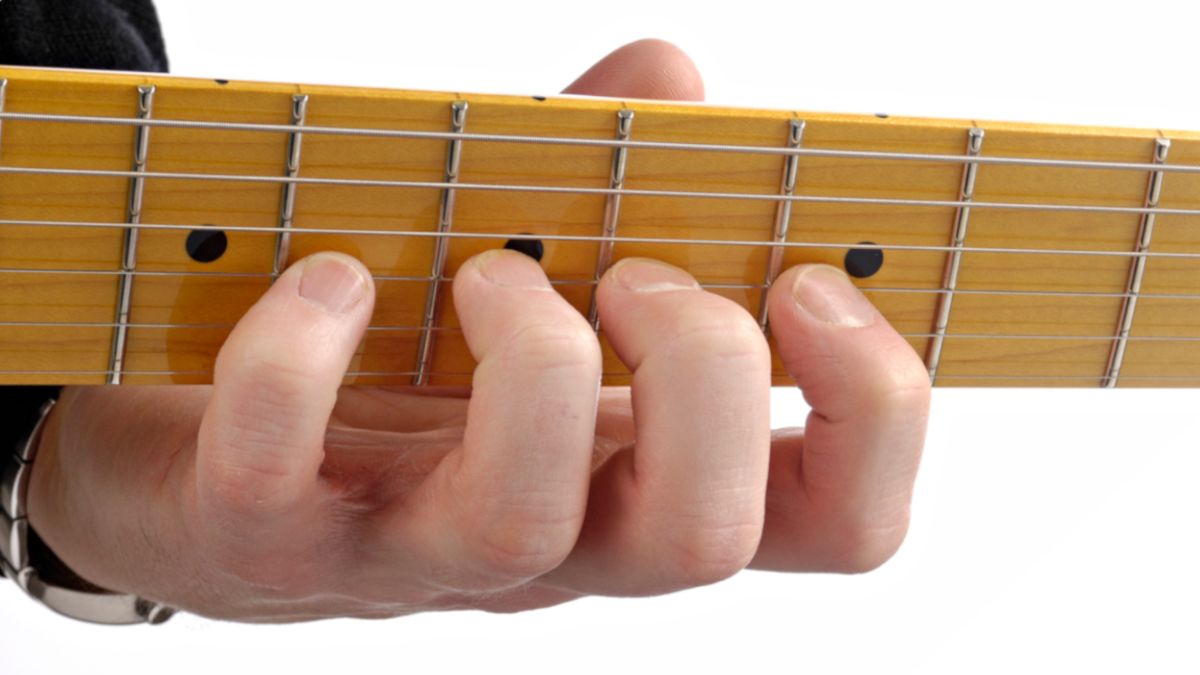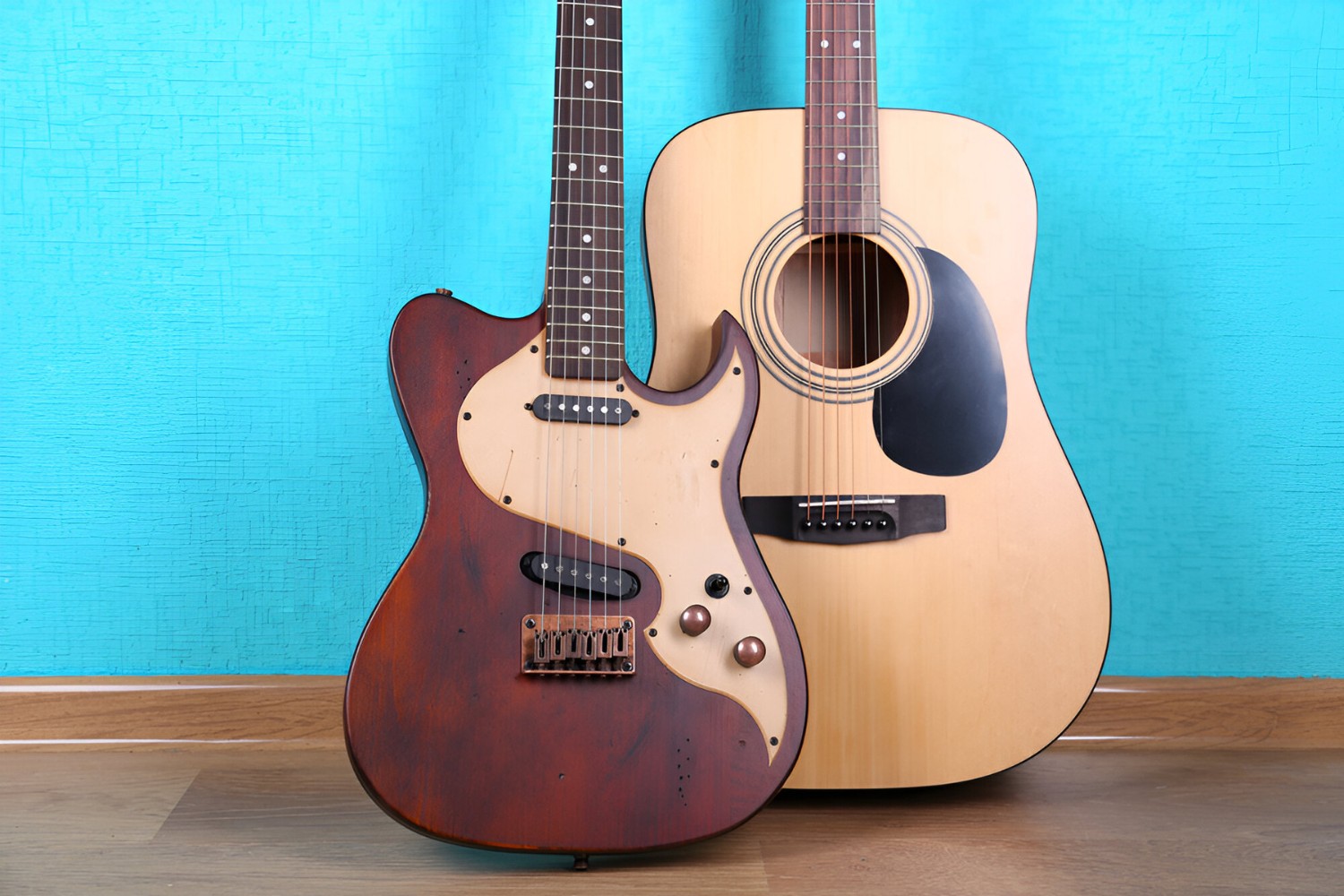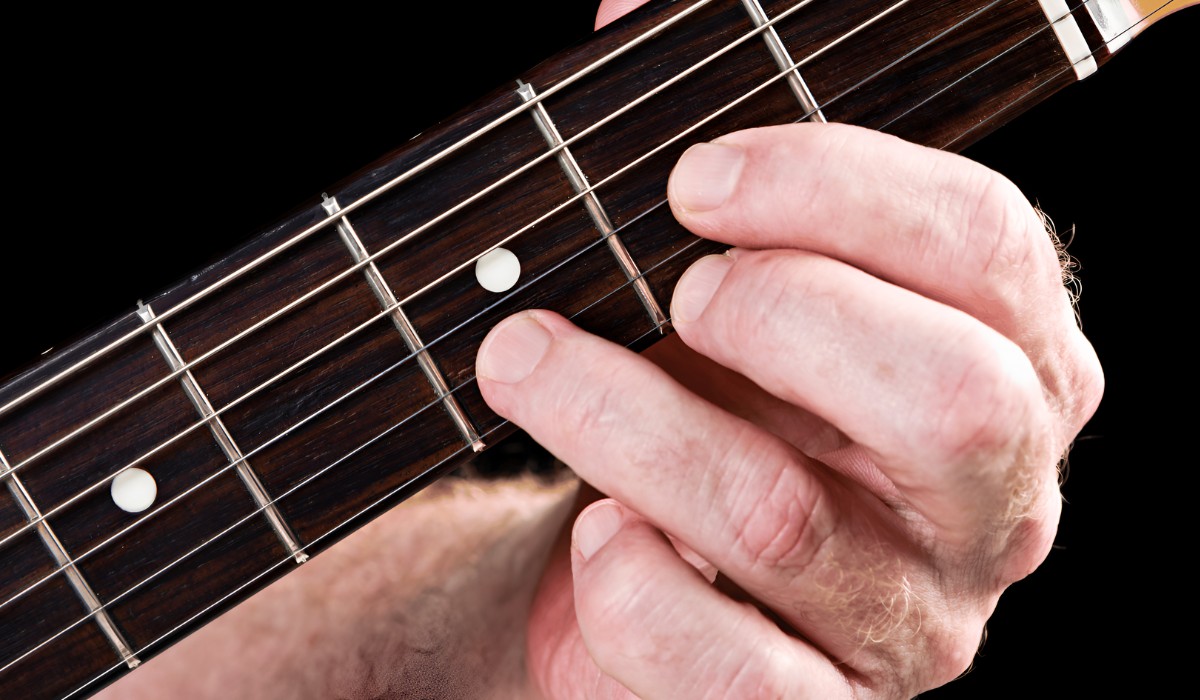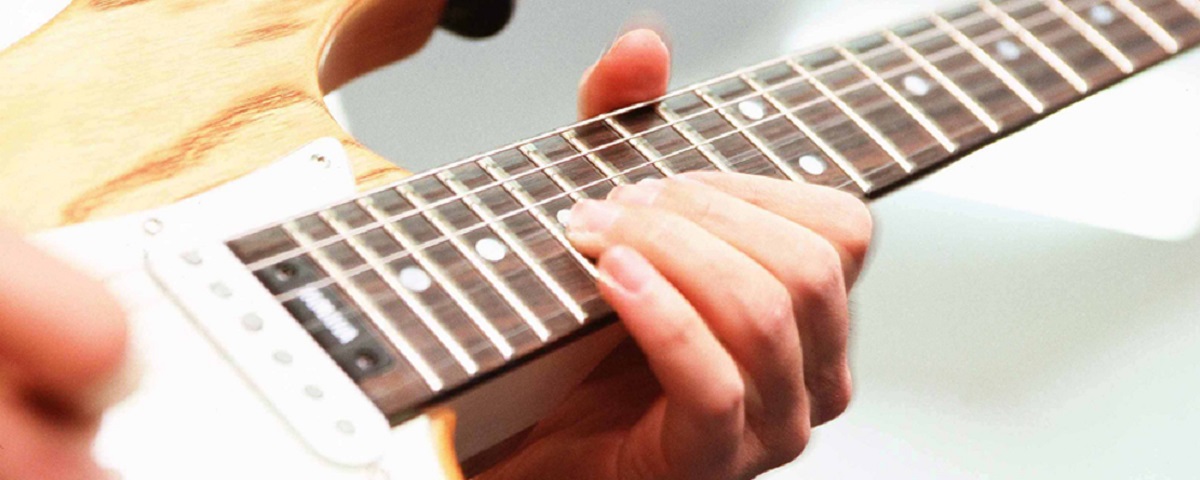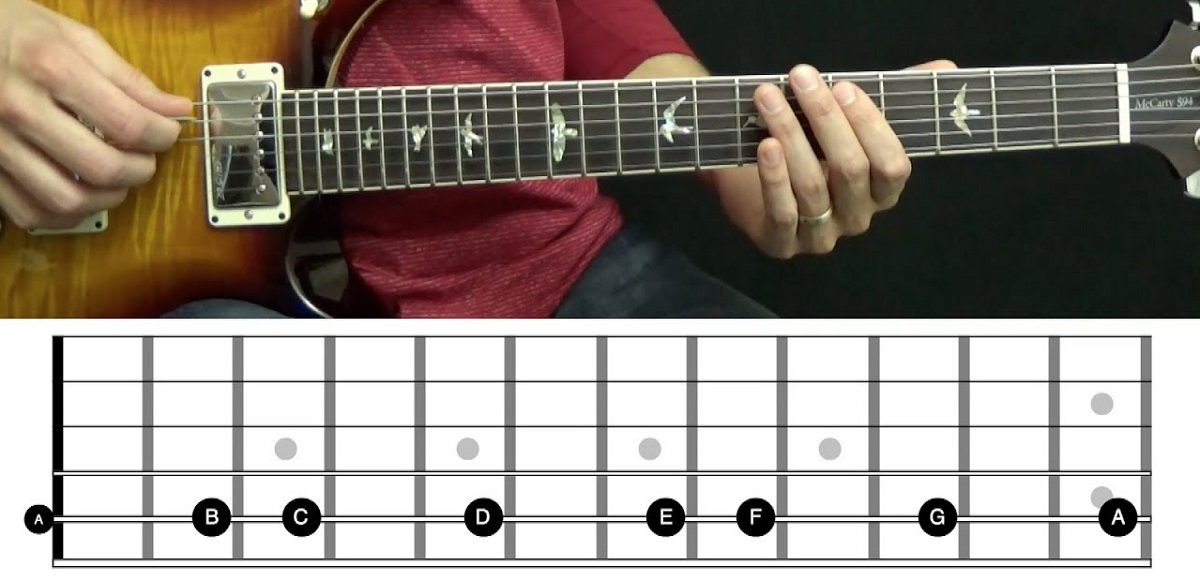Introduction
So, you've decided to embark on a musical journey and learn the electric guitar. Congratulations! Learning to play this versatile and expressive instrument can be an incredibly rewarding experience. One of the fundamental aspects of mastering the electric guitar is understanding and memorizing the notes on the fretboard. This knowledge forms the foundation for playing melodies, chords, and improvising with confidence. In this guide, we will explore various techniques and strategies to help you learn the electric guitar notes effectively.
Understanding the layout of the guitar fretboard and the relationship between notes is essential for any aspiring guitarist. By mastering the notes on the fretboard, you will gain the ability to navigate the instrument with ease, unlocking a world of musical possibilities. Whether you're a beginner picking up the guitar for the first time or an intermediate player looking to deepen your understanding, this guide will provide you with valuable insights and practical tips to enhance your musical journey.
Learning the notes on the electric guitar fretboard may seem like a daunting task at first, but with dedication and the right approach, you can make significant progress. By familiarizing yourself with the open string notes, understanding the natural notes on the fretboard, and utilizing mnemonic devices, you can accelerate your learning process and build a strong foundation for your musical endeavors. Additionally, practicing scales and chords will further solidify your knowledge of the fretboard and empower you to express yourself musically with confidence and fluency.
Whether you aspire to play rock, blues, jazz, or any other genre, having a solid grasp of the electric guitar notes will undoubtedly enrich your musical journey. So, let's dive in and explore the exciting world of electric guitar notes, unlocking the potential for creativity and expression on this iconic instrument.
Understanding the Guitar Fretboard
Before delving into the specifics of learning individual notes, it’s crucial to develop a solid understanding of the guitar fretboard. The fretboard is the long, slender portion of the guitar where the strings are positioned and the notes are played. It consists of metal frets that divide the neck into distinct segments, allowing the guitarist to produce different pitches by pressing the strings against them.
Each fret represents a half step, or semitone, which is the smallest interval in Western music. By moving up the fretboard, you increase the pitch of the notes. The strings are typically tuned to EADGBE from the lowest-pitched string to the highest. Understanding the tuning of the strings and the layout of the fretboard is essential for navigating the instrument effectively.
Furthermore, it’s important to grasp the concept of octave equivalence, which means that the same note occurs at a higher or lower pitch in a 12-note cycle. This understanding is valuable when identifying notes and patterns on the fretboard. As you progress in your learning journey, you’ll discover the recurring nature of notes and intervals across the fretboard, empowering you to visualize and execute musical ideas with precision.
Additionally, familiarizing yourself with fretboard diagrams and visual aids can significantly aid your comprehension. These diagrams display the fretboard with markers indicating the positions of specific notes, empowering you to visualize and internalize the layout of the fretboard. By consistently referencing and studying fretboard diagrams, you’ll gradually develop a strong mental map of the instrument, facilitating seamless navigation and note recognition.
Understanding the guitar fretboard is akin to learning the geography of a new territory. By immersing yourself in its layout, internalizing the relationships between notes, and practicing fretboard visualization exercises, you’ll gradually develop a deep familiarity with the instrument. This foundational knowledge will serve as a springboard for your exploration of electric guitar notes and pave the way for your musical growth and proficiency.
Learning the Open String Notes
Mastering the open string notes is a pivotal step in familiarizing yourself with the electric guitar fretboard. The open strings of a standard-tuned guitar are tuned to the following notes from the lowest-pitched string to the highest: E, A, D, G, B, and E. These open strings serve as the foundational reference points for identifying and understanding the layout of the fretboard.
Begin by acquainting yourself with the names and pitches of each open string. Plucking each string individually and vocalizing the corresponding note can help reinforce your auditory and muscle memory. As you become more familiar with the open string notes, you’ll develop a tactile and auditory connection to the instrument, laying a solid groundwork for further exploration.
Practicing scale patterns and simple melodies using the open strings can enhance your familiarity with their positions and pitches on the fretboard. By engaging in exercises that incorporate the open strings, you’ll gradually internalize their locations and sonic characteristics, empowering you to transition smoothly between different notes and create engaging musical phrases.
Moreover, understanding the harmonic relationships between the open string notes is essential for comprehending chord structures and scale formations. As you progress in your learning journey, you’ll discover how the open strings interact with fretted notes to produce rich harmonies and resonant chord voicings. This awareness will deepen your understanding of the instrument’s sonic potential and enable you to craft captivating musical compositions.
By immersing yourself in the exploration of open string notes, you’ll lay a strong foundation for navigating the fretboard and expanding your musical repertoire. Embrace the process of familiarizing yourself with the unique characteristics of each open string, and leverage this knowledge to fuel your creativity and musical expression on the electric guitar.
Memorizing the Natural Notes on the Fretboard
Once you’ve grasped the open string notes, the next step in mastering the electric guitar fretboard involves memorizing the natural notes across the fretboard. The natural notes, also known as the “white keys” in music theory, encompass the notes A, B, C, D, E, F, and G. Understanding the distribution and placement of these notes on the fretboard is pivotal for fluently navigating the instrument and unlocking a myriad of melodic and harmonic possibilities.
Begin by familiarizing yourself with the natural notes on each individual string. By ascending the fretboard and vocalizing the names of the notes, you can reinforce your recognition and internalization of their positions. It’s beneficial to practice this exercise on each string, gradually expanding your familiarity with the fretboard’s layout.
Furthermore, visualizing and memorizing the natural notes within specific fretboard regions can enhance your ability to navigate the instrument seamlessly. By identifying patterns and intervals between the natural notes, you’ll develop a mental map of the fretboard that facilitates quick note recognition and efficient movement between different positions.
Utilizing fretboard diagrams and interactive learning tools can aid in solidifying your knowledge of the natural notes. These resources provide visual representations of the fretboard, allowing you to study and internalize the positions of the natural notes across different strings and frets. Regularly engaging with these visual aids can reinforce your understanding and expedite the memorization process.
As you progress, integrating the memorization of natural notes into your daily practice routine can yield significant results. By dedicating focused practice sessions to identifying and vocalizing the natural notes across the fretboard, you’ll gradually internalize this fundamental aspect of guitar theory, empowering you to navigate the instrument with confidence and precision.
By immersing yourself in the process of memorizing the natural notes on the fretboard, you’ll enhance your overall musical fluency and set the stage for more advanced explorations of scales, chords, and melodic patterns. Embrace this foundational knowledge as a springboard for your musical growth and creative expression on the electric guitar.
Using Mnemonics to Remember Notes
Employing mnemonics can be a powerful and creative approach to memorizing the notes on the electric guitar fretboard. Mnemonics are memory aids that leverage associations, acronyms, or vivid imagery to facilitate the retention of information. When applied to learning the notes on the fretboard, mnemonics can provide an engaging and effective way to internalize the positions and names of the notes.
One popular mnemonic device for remembering the natural notes on the guitar strings is the use of acronyms. For instance, the phrase “Eddie Ate Dynamite, Good Bye Eddie” represents the open string notes from lowest to highest: E, A, D, G, B, and E. By crafting and reciting mnemonic phrases or acronyms, you can create memorable associations that aid in recalling the sequence of notes on the strings.
Additionally, creating visual associations and mental imagery for each note can enhance your ability to remember their positions on the fretboard. For example, envisioning a specific object or scene that corresponds to a particular note can imprint the information more vividly in your memory. This imaginative approach can transform the process of note memorization into a creative and engaging exercise.
Another mnemonic technique involves creating memorable stories or narratives that incorporate the sequence of notes on the fretboard. By weaving a narrative that links the notes together in a cohesive and entertaining manner, you can infuse the memorization process with a sense of storytelling and imagination, making the learning experience more enjoyable and effective.
Furthermore, leveraging color-coded visual aids and diagrams can complement mnemonic strategies, providing additional reinforcement for note memorization. Associating specific colors with each note or fretboard position can create a visual framework that reinforces your memory of the note locations and fosters a multi-sensory approach to learning.
Ultimately, incorporating mnemonics into your practice routine can infuse the process of memorizing guitar notes with creativity and fun. By embracing mnemonic devices as playful and effective tools, you can enhance your ability to recall the fretboard notes with ease and confidence, laying a strong foundation for your musical journey on the electric guitar.
Practicing Scales and Chords
Engaging in deliberate practice of scales and chords is a pivotal aspect of mastering the electric guitar notes and fostering musical fluency. Scales, such as the major and minor scales, provide a structured framework for familiarizing yourself with the sequence of notes and intervals across the fretboard. By practicing scales, you develop dexterity, ear training, and a deeper understanding of musical harmony.
Begin by learning and practicing fundamental scales, starting with the major and minor scales. These foundational scales serve as the building blocks for constructing melodies, improvising, and understanding the tonal characteristics of different musical keys. By consistently practicing scales in various positions and keys, you’ll internalize the patterns and relationships between notes, refining your technique and expanding your musical vocabulary.
Additionally, delving into the realm of chord progressions and voicings can enrich your exploration of electric guitar notes. Chords are formed by combining different notes simultaneously, creating harmonic structures that underpin countless songs and compositions. By practicing chord progressions and experimenting with diverse chord voicings, you’ll deepen your understanding of how notes interact within a harmonic context, enhancing your ability to navigate the fretboard with versatility and expressiveness.
Furthermore, integrating scale and chord exercises into your daily practice routine can yield significant improvements in your overall musicianship. By dedicating focused practice sessions to scales and chords, you’ll cultivate muscle memory, ear training, and a keen sense of tonal relationships, ultimately enhancing your ability to translate musical ideas into captivating performances on the electric guitar.
Exploring scale patterns and chord voicings across different regions of the fretboard can expand your sonic palette and empower you to navigate the instrument with confidence. As you practice scales and chords, pay attention to the nuances of tone, dynamics, and articulation, honing your ability to convey emotion and musicality through your playing.
Embrace the process of practicing scales and chords as a transformative journey that not only strengthens your command of electric guitar notes but also cultivates your artistic expression and musical prowess. By immersing yourself in the exploration of scales and chords, you’ll elevate your playing to new heights and unlock a world of creative possibilities on the electric guitar.
Conclusion
Congratulations on embarking on the enriching journey of learning electric guitar notes. By understanding the layout of the guitar fretboard, familiarizing yourself with the open string notes, memorizing the natural notes, employing mnemonic devices, and practicing scales and chords, you have laid a solid foundation for your musical exploration on the electric guitar.
As you continue to immerse yourself in the world of electric guitar notes, remember that patience, dedication, and consistent practice are key to mastery. Embrace the process of learning with curiosity and enthusiasm, allowing yourself to make mistakes and grow from each musical challenge.
By internalizing the intricacies of the fretboard and developing a deep familiarity with the notes, you have equipped yourself with the tools to express your musical ideas with confidence and fluency. Whether you aspire to play rock, blues, jazz, or any other genre, your understanding of electric guitar notes will serve as a springboard for creative expression and artistic fulfillment.
As you navigate the fretboard, let your passion for music guide you. Listen intently to the sounds you produce, experiment with different techniques, and allow your unique musical voice to shine through. The journey of learning electric guitar notes is not merely about mastering technical skills; it’s about harnessing the instrument as a vehicle for self-expression and emotional communication.
Remember that every note you play carries the potential to convey emotion, tell a story, and connect with others on a profound level. Embrace the joy of discovery, the exhilaration of creative expression, and the transformative power of music as you continue to explore the vast and wondrous landscape of electric guitar notes.
May your musical journey be filled with inspiration, growth, and moments of pure musical magic. Embrace the instrument as a faithful companion on your path to musical excellence, and let the electric guitar notes become the vibrant colors with which you paint your musical canvas.







